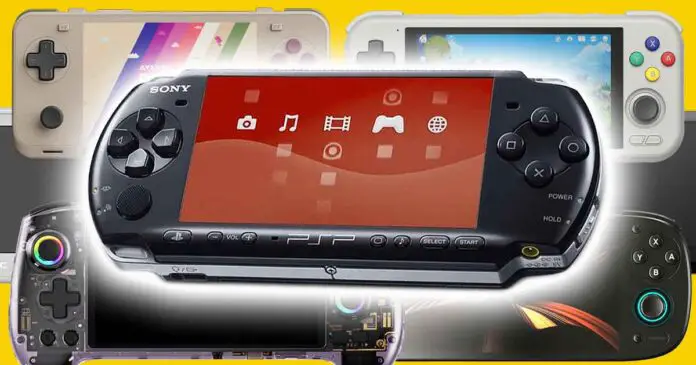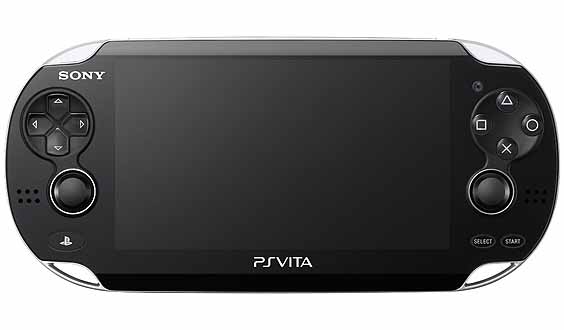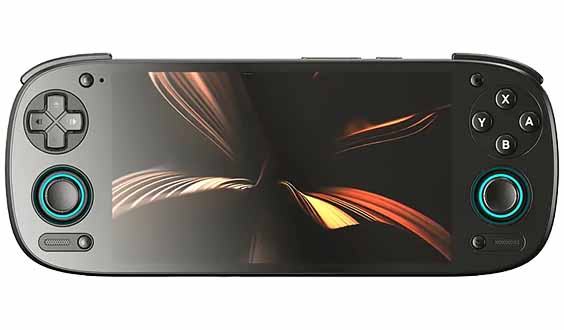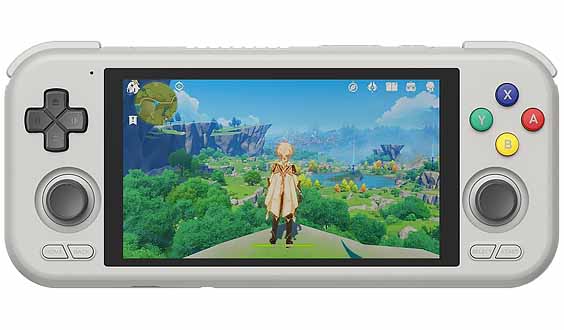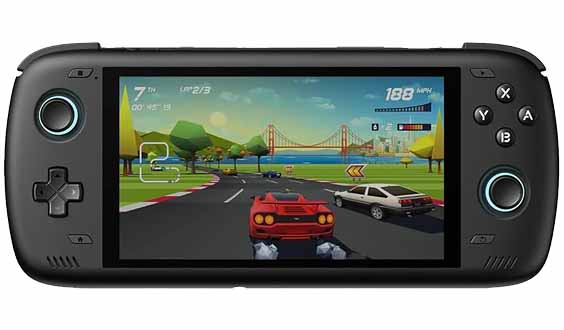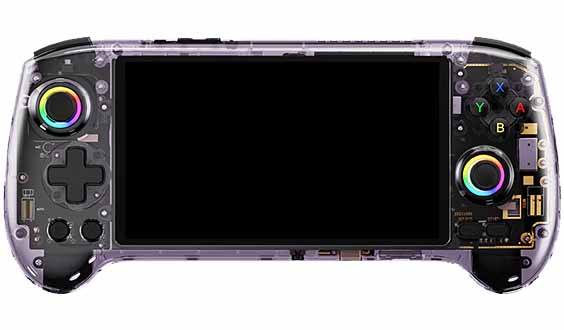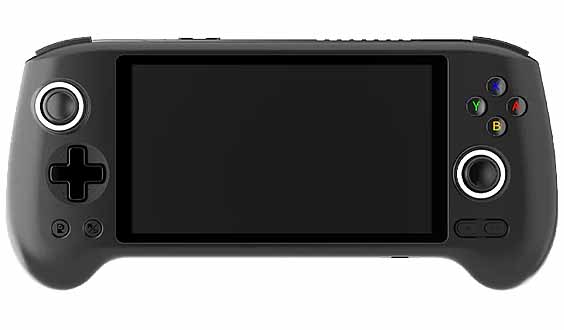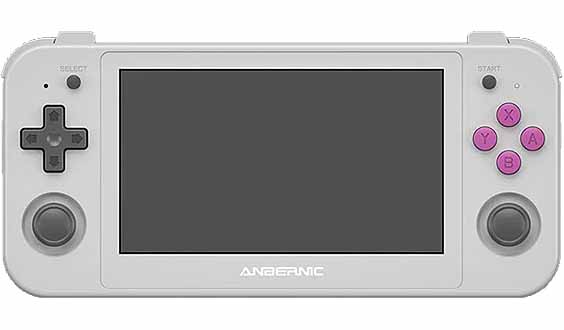The PlayStation Portable (PSP) has a legendary library of games that many of us still have lying around in our closets. While you could dust off the original hardware, today’s handheld emulators often feature larger and better quality screens, more power for image upscaling, and the convenience of emulating many other video game systems. If you’re looking to get the very best emulated PSP experience, you’re in the right place. Let me quickly show you the best devices for the job.
Check out also: 10 Best Retro Handheld Emulator Consoles of This Year – My Personal Picks!
This web portal is reader-supported, and is a part of the AliExpress Partner Program, Amazon Services LLC Associates Program and the eBay Partner Network. When you buy using links on our site, we may earn an affiliate commission!
Why Not Just Use a Modded PSP?
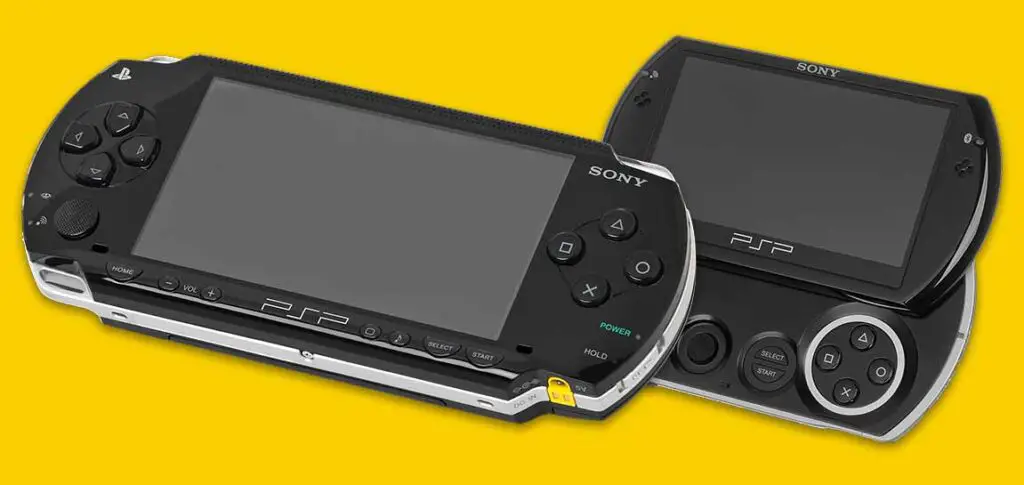
If you’ve come to this place, you probably know this by now: original PSP models are getting harder and harder to find in good condition and at a reasonable price.
The better the condition a used console is in, the higher its price will be, with unopened units reaching astronomical prices due to the PSP having been discontinued for more than 10 years now.
At the same time, in many cases older second-hand PSP models might require a battery replacement and at times other minor fixes.
If you’d like to go for the original hardware, knowing its shortcomings but being rightfully guided by nostalgia, there are still many offers available online (for example, here over on eBay).
Pocket handheld emulators can do much more than the original PSP hardware, although I won’t pretend that in most cases they are as convenient when it comes to user experience and overall design. It’s hard to beat early 2000s Sony in that regard.
Getting a pocket handheld emulator over an old PSP console can grant you:
- Superb battery life right out of the box, allowing for long hours of gameplay.
- The ability to upscale PSP games to 1080p and beyond, depending on your chosen emulator’s chipset and display resolution.
- Access to many other console emulators; on the most capable handhelds, this even includes hardware such as GameCube, PS2, or the first-generation Nintendo Switch!
- The convenience of comfortably handling your gaming device without worrying about accidentally damaging the now-archival relic that is the original PSP (yes, we’re already this old).
These are only a few things that in my honest opinion make many of the more popular handheld emulators worth considering.
This list will also omit smaller form factor devices. Although many pocket emulators are capable of nearly flawless PSP emulation (like for instance the Powkiddy V90S that I’ve recently reviewed), their tiny 4:3 displays are in most cases not exactly the best for an enjoyable PSP experience. That’s why I’ve decided to leave them out.
Keep in mind that there is another option here you might have not considered yet, and that is the original PS Vita, which has full support for nearly all PSP and PS1 games. This will be the first handheld on our list.
1. A Modded PS Vita
- Full native PSP compatibility via Adrenaline
- Second analog stick can be mapped to the PSP D-pad
- Perfect performance in all of the PSP & PS1 titles
- You need to go through a quick software modding process to use Adrenaline
- No efficient way to upscale games beyond the native resolution
- Gets progressively harder to get as time goes by
If I’m to be completely honest, I just have to start with the PS Vita. A modded PlayStation Vita is arguably the best way to play older PSP games, and in fact, is the only way I play games like Tekken 5: Dark Resurrection, or the original Patapon series.
Using the Adrenaline homebrew app, a modded Vita essentially transforms into a fully-featured PSP alongside with the entire OS view of its predecessor, providing flawless compatibility with the entire PSP and PS1 game library. Zero slowdowns, zero compatibility issues.
The key advantages here are the Vita’s hardware, which for me and many others is one of the absolute best handheld consoles of the last decade. The first-generation PCH-1000 model features a stunning 5-inch OLED screen that makes the PSP’s already beautiful games look really great (although the drop in resolution in comparison to the native Vita games is noticeable).
One of the biggest upgrades however, is the presence of a second analog stick, which can be mapped for camera control in many PSP games that originally relied on the D-pad, making them much more enjoyable to play. While setting it all up takes a little effort, the result is a premium PSP experience with a better screen and improved controls. For me, this is the way to go.
2. Retroid Pocket 5
- 5.48-inch 1080p AMOLED touch display
- Comfortable, almost Vita-like ergonomics and design
- Great performance up to Switch V1, with some limitations
- Arguably worse build quality than the equivalent AYANEO models
- The price is still pretty high
The Retroid Pocket 5 powered by the Qualcomm Snapdragon 865 CPU has been praised as one of the best retro gaming handhelds, and it’s a perfect match for PSP emulation given its similar form factor. It features a gorgeous 5.48-inch 1080p AMOLED touchscreen, and has more than enough power to run the majority of the PSP library upscaled, matching its own native display resolution.
While its controls have received some criticism, they are still, in my opinion, perfectly suited for the PSP, PS2, Wii, and the Switch, all of which you can emulate using this device. It’s not a surprise that the RP5 finds its way to most of the pocket emulation hardware top lists, and is one of the most popular choices when it comes to horizontal retro handhelds these days.
3. Retroid Pocket 4 Pro
- Fantastic performance for a good price
- Great performance up to the PS2 era
- Still a design similar to that of the PSP/PS Vita.
- Actively cooled – the fan noise can be an issue for some
- Not an OLED display
- Will struggle with Switch V1 games
Retroid Pocket 4 Pro is the predecessor of the RP5, and a fantastic choice under $200. It runs on a MediaTek Dimensity 1100 chip, which is powerful enough to handle even the most demanding PSP games like God of War: Chains of Olympus at 3x resolution with no frame skipping.
It features a smaller 16:9 4.7-inch IPS screen and a slightly less powerful chipset, but its performance-to-price ratio is what makes it really stand out, as it’s much more affordable than its updated version. You get a device that can reliably play the entire PSP library with enhanced visuals in a pocketable form factor, without having to spend money on the absolute best hardware on the market. And it still can emulate systems like the PS2, Wii, or Gamecube without any trouble!
4. AYN Odin 2
- Comparable performance, larger than the Pocket Ace
- Can play a large selection of Switch V1 games, and some PS3 titles
- Large 8000 mAh battery
- At this price point an OLED display could be an option
- A little bit less pocketable the our other options
If raw power is what you’re after, and you’re ready to spend a little bit more, the AYN Odin 2 is currently one of the most powerful Android handheld emulation devices you can get. Powered by a Snapdragon 8 Gen 2, this device is one of the most powerful handhelds in this form factor. This allows you to crank up the settings in the PPSSPP emulator to their absolute maximum without worrying about performance issues.
6-inch 1080p display 60 FPS upscaled PSP gameplay is what it can provide, and not only that, but it also offers a clean Switch V1 emulation performance, and a decent PS3 performance on many games. Combine this with its excellent battery life and comfortable controls, and you have a device that can play the entire PSP library not just perfectly, but also make it look and feel significantly better than it ever did on the original hardware. It’s definitely one of the best devices on this list.
5. Anbernic RG557
- A large 5.48-inch AMOLED touch display
- Great performance up to the PS2 era, excellent PSP performance
- Great GPU speed improvement in comparison to the RG556
- Well designed comfortable grip design
- Only translucent black, and white versions available
- Not really fit for Switch/PS3 emulation
The RG557 is the first of the three Anbernic devices on this list, and we’re starting with the newest one in this series as of now. With its MediaTek Dimensity 8300 chip and a 5.48-inch 1080p AMOLED display, the RG557 can very easily tackle PSP emulation, allowing you to run most if not all games from the PlayStation Portable library at upscaled resolution.
Its design, featuring protruding hand grips, is made to be more comfortable during longer playing sessions, and it shares the exact same shell as the older RG556. When it comes to this model, as well as the Anbernic RG556 and RG505, which are coming up next, you can expect stellar performance with consoles up to the PS2. A great set of options overall.
6. Anbernic RG556
The Anbernic RG556 comes with an 5.5-inch AMOLED screen and a Unisoc Tiger T820 processor is still perfectly capable of running demanding PSP titles like God of War: Ghost of Sparta at a 2x or even 3x resolution with stable performance.
Being very similar to the RG557, but with a less powerful main chipset, it’s still a very solid pick. While it may not have the raw power for perfect high-end PS2 emulation, it hits a sweet spot for PSP, offering a great screen and comfortable ergonomics at a reasonable price.
7. Anbernic RG505
- A great budget option for perfect PSP emulation performance
- A 4.95-inch OLED display
- Acceptable PS2 performance on most titles
- Not the best option out there for the PS2/GameCube console era
- A slightly less ergonomic design without the back grips present on the newer RGXXX consoles
The last Anbernic device on the list, the RG505, is our budget choice when it comes to devices for emulating PSP games. Despite its lower price, it can also cut into the PS2 catalog (albeit with some limitations), similarly to the other RG devices that we’ve gone through.
It’s only downsides are reduced OLED display size and resolution, a bit smaller battery (5000 vs 5500 mAh), and a an older UNISOC Tiger T618 chipset with less max power and less RAM on board. Although its design differs a bit from what you have seen on the more recent consoles from Anbernic, it’s still really worth considering, especially if you’re on a tight budget.
Honorable Mention: The R36S
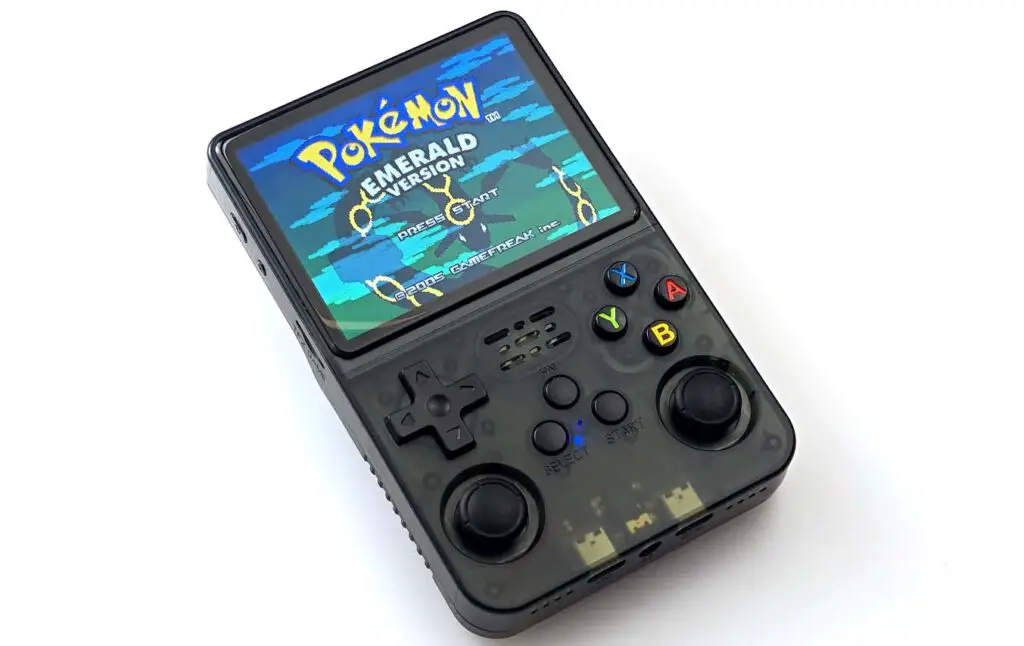
The R36S which I have done a full hands-on review here on TechTactician, as well as the R36S MAX, can also play some PSP games. However don’t expect stellar performance or the best user experience from either of them when it comes to these.
While some part of the PSP game library is actually playable on the R36S and all of its newer versions, especially when it comes to the simpler 2D titles, both the screen resolution and aspect ratio and the design of the console don’t exactly make it the best experience.
Needless to say, if you primarily plan to play other, older systems, and just want access to some PSP titles as a neat addition, you might be interested in this little device too.
You might also like: Miyoo Mini Plus Handheld Emulator Console Hands-On Review
And That’s Pretty Much It!
If you want to learn more about the most popular and worthwhile retro emulator handhelds, feel free to check out my top list for this year over here: 10 Best Retro Handheld Emulator Consoles of This Year – My Personal Picks!
If you’re interested in horizontal handhelds only, similar to the Retroid Pocket 5, or the AYN Odin 2, you might be interested in another of our rankings including the best horizontal handhelds for retro games.
All in all, I hope this short guide was helpful to you. Until next time!
Check out also: 12 More Budget Pocket Handheld Emulators for This Year

